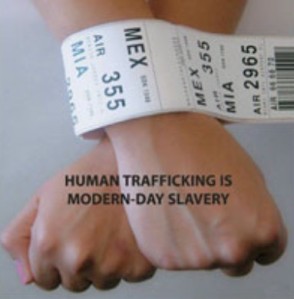MODERN-DAY SLAVERY
Human Trafficking IS Modern-Day Slavery
“None of us, is truly free, while others remain enslaved.“
~Archbishop Desmond Tutu
Human trafficking has many faces, most notably the sex trafficking industry and the slave labor market. But the common threads of all trafficking outweigh apparent differences in circumstance. All human traffickers, pimps, “coyotes”, and “snakeheads” (colloquial terms for traffickers in Latin and Asian communities respectively) profit from human misery characterized by abuse and exploitation. Victims in most cases are manipulated to feel powerless, ashamed, and afraid. Whether it’s in factories or fields, in restaurants, homes, or brothels, the face of modern-day slavery is sorrow and shame. Trafficking in Persons amounts to modern-day slavery.
The United States Government passed the Trafficking Victims Protection Act (TVPA) in 2000, and has amended it several times. It defines trafficking as the recruitment of a person by means of force, fraud, or coercion for the purpose of debt bondage, involuntary servitude, or commercial sex acts. It is crucial to understand that many victims of this crime are not necessarily physically restrained or under constant supervision. Once recruited, their resistance is methodically broken by a proven combination of physical abuse, threats, humiliation, privation, isolation, constant fear and insecurity. Documents are taken away. “Debts” accrue quickly for basic necessities. Isolation is imposed. Physical violence and the threat of it are basic tools. They may be convinced that they are criminals themselves, and that the only people they can trust are their traffickers. If they were to escape, they believe it would shame themselves, and their families, and they would end up in prison. Though some victims may be complicit in their own circumstances, they are victims none the less. They have been deceived and exploited, even if they are not fully aware of it. To their captors these people are merely commodities, little better than animals and often treated worse.
The United States is the largest consumer of many common commodities tainted by the use of slave labor. Coffee, sugar, chocolate, and cotton are just a few examples. Many manufactured goods such as clothing, electronics, and cosmetics may also have slave labor issues with elements in their supply chain. Well informed consumers are the strongest weapon in curtailing this kind of abuse. We have devoted several pages to looking more closely at some of these products and discussing alternative choices.
<previous page ………. next page>

December 16, 2012 at 3:45 pm |
Although US prison inmates are not “trafficked” in the sense normally used here, they are still commodities in the corporate marketplace and their “labor” is not paid for by wages. They enrich corporations and the private for-profit prison industrial complex. Are these folks part of your picture?
December 16, 2012 at 11:09 pm |
Please see our page on Penal Labor and you’ll find many links to more information about “Slavery By Another Name”.